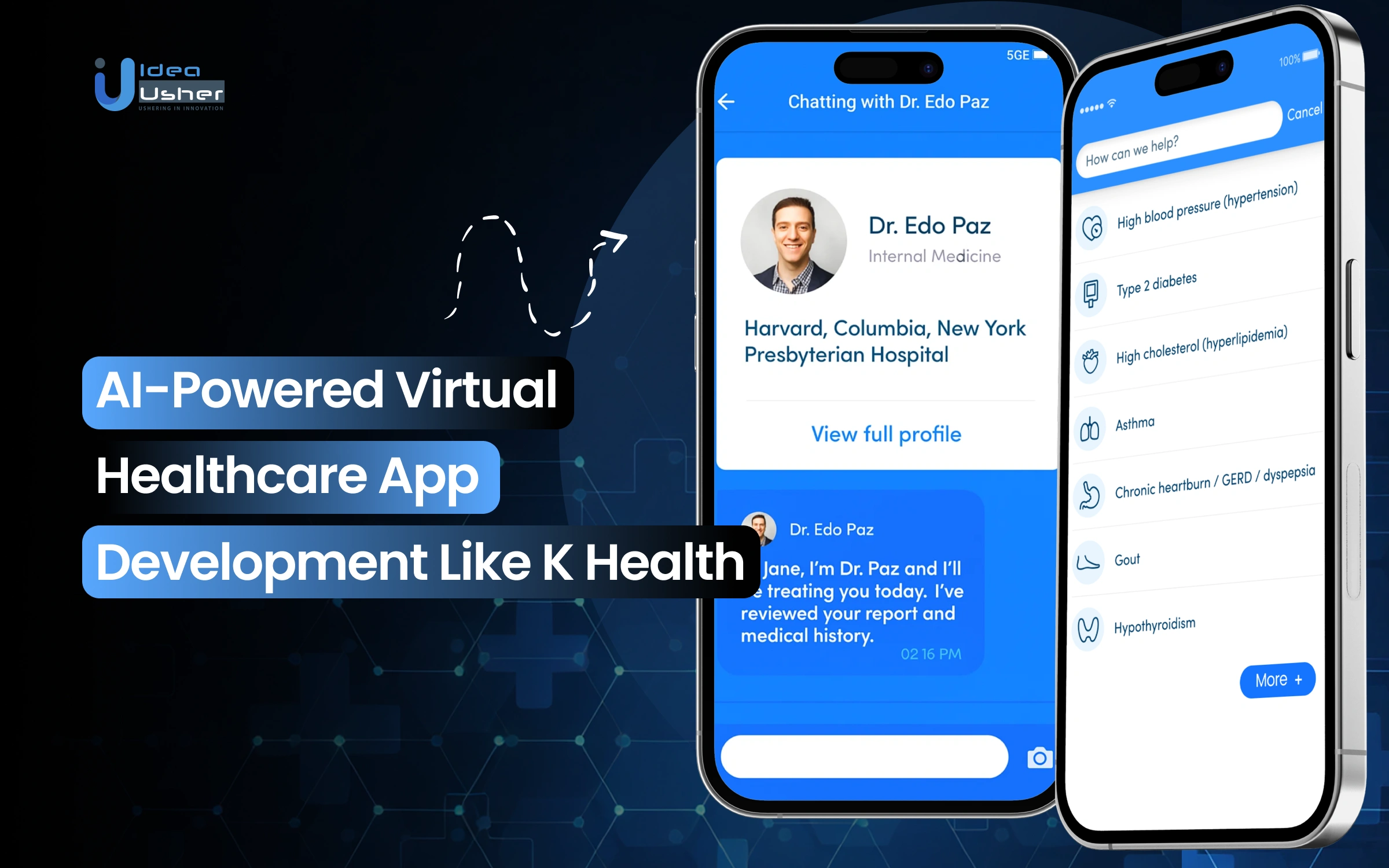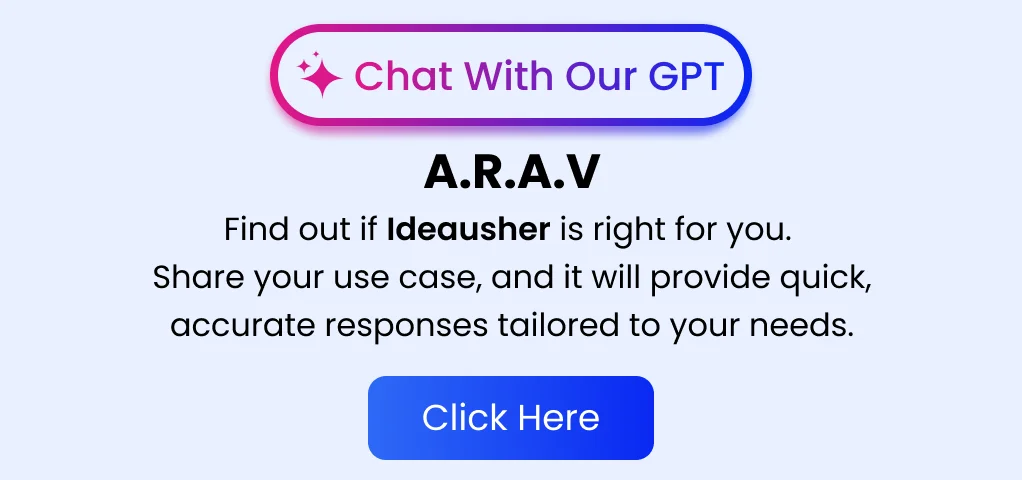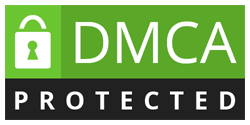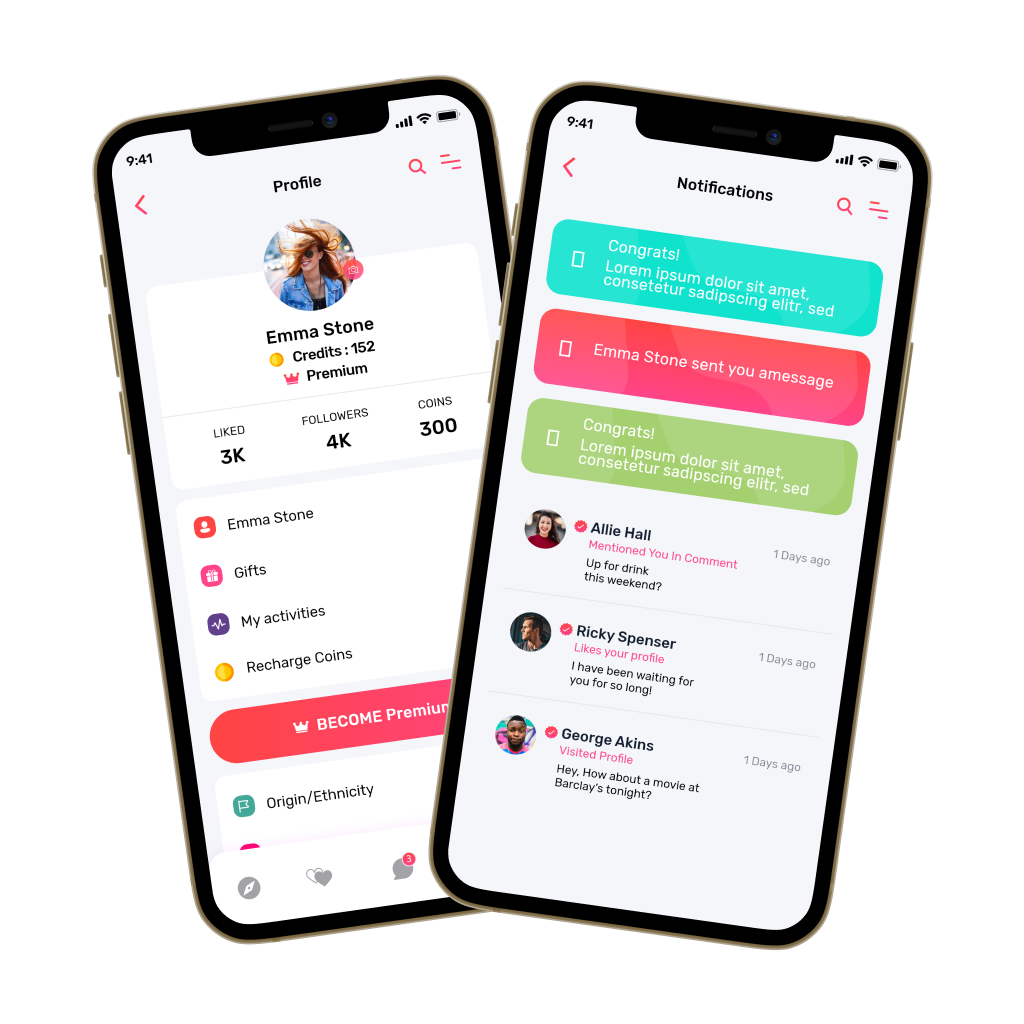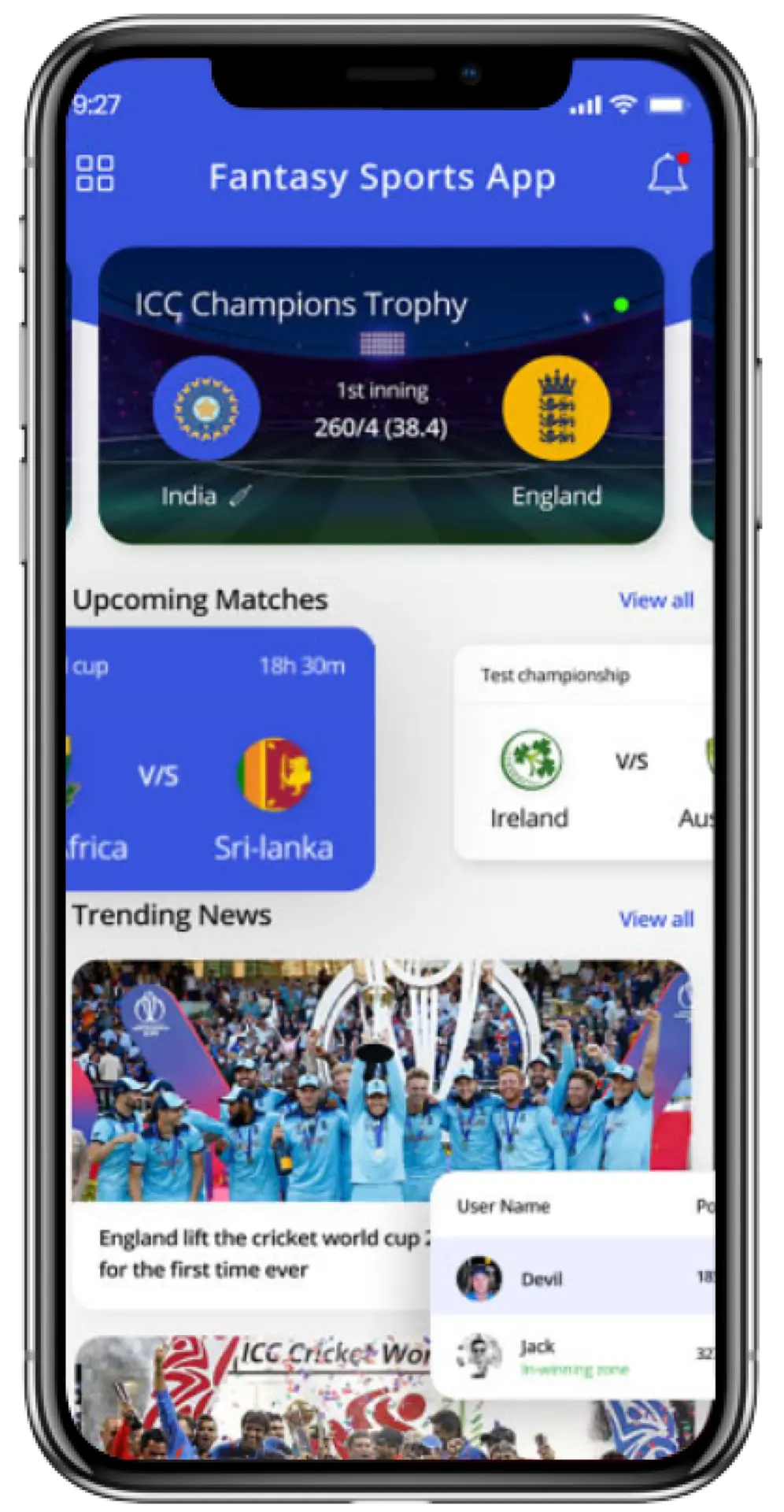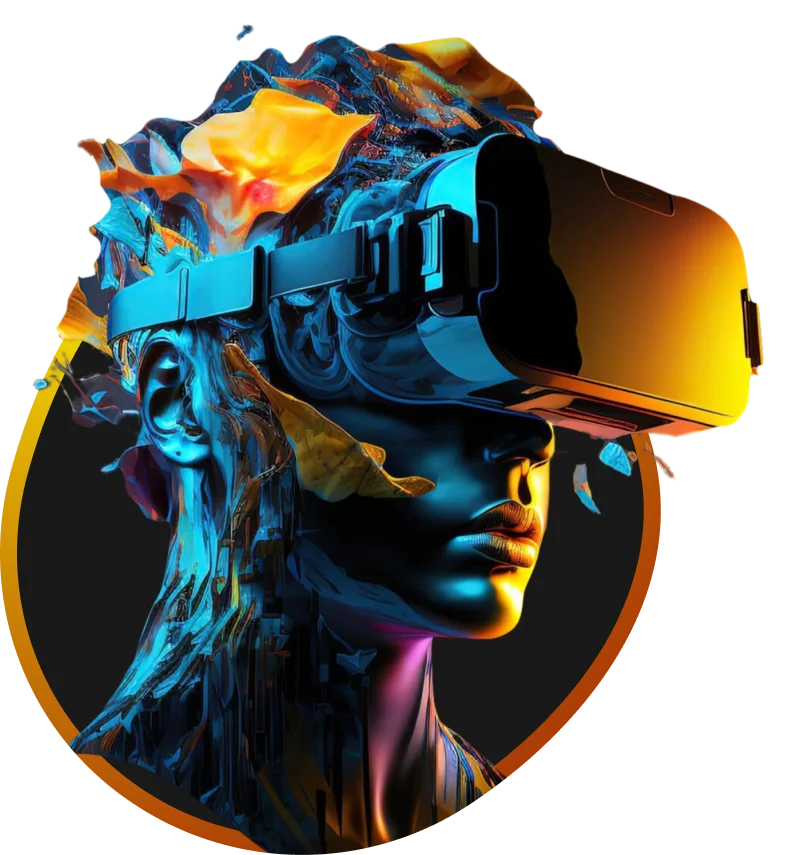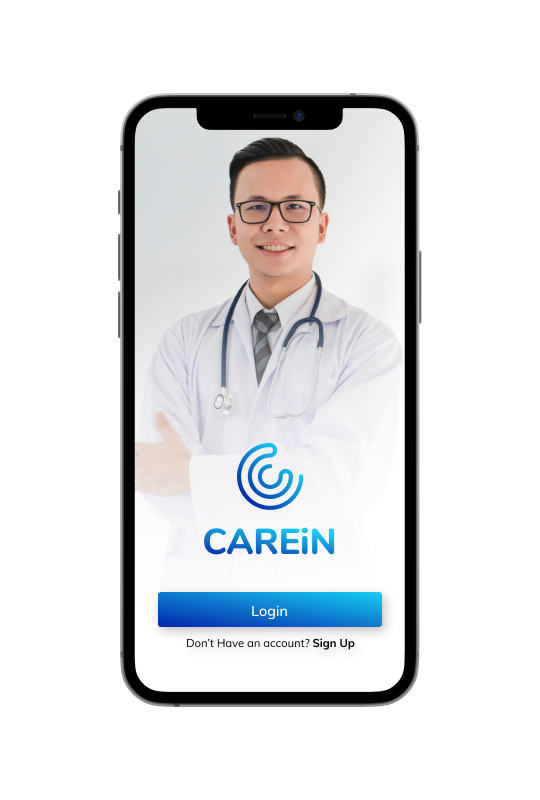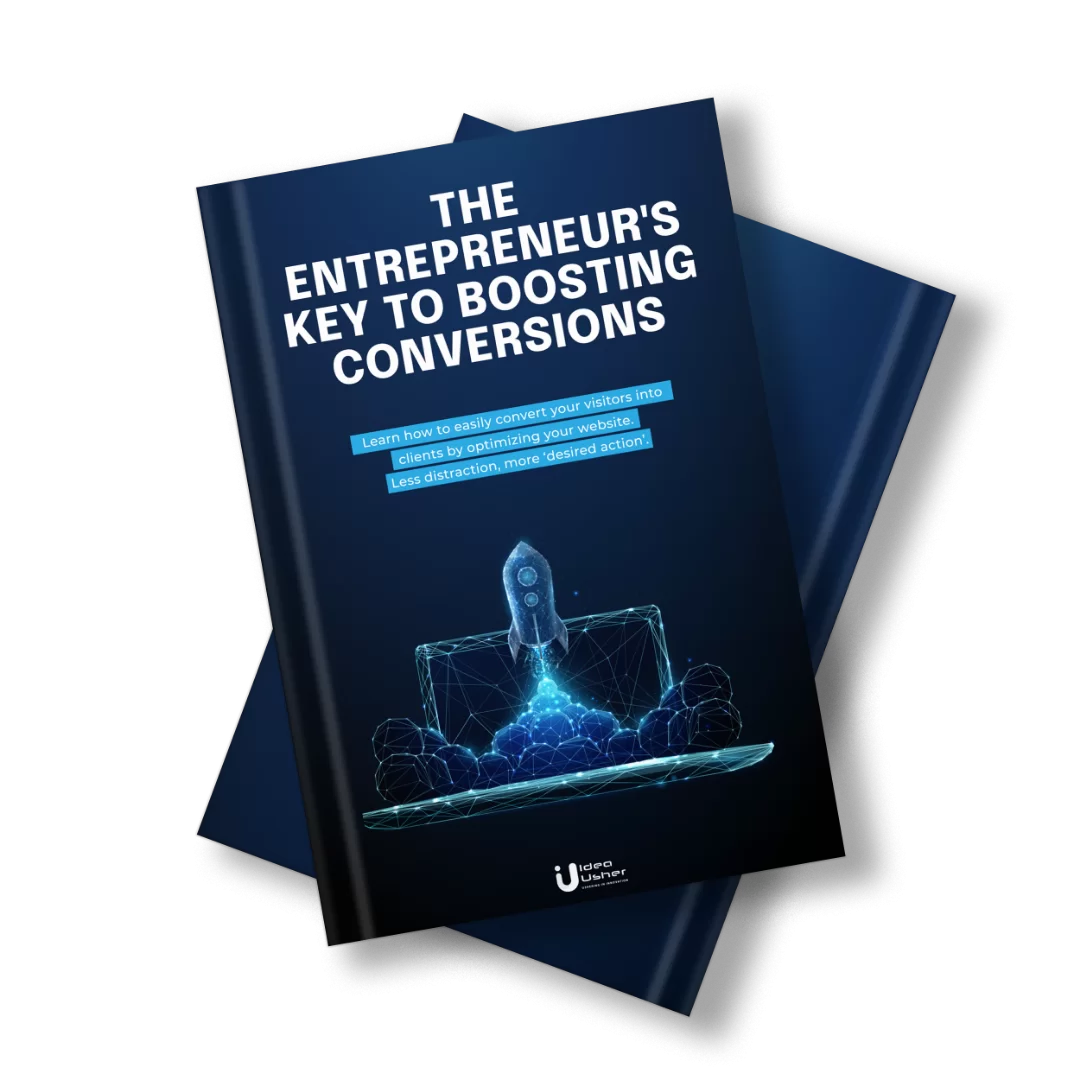Healthcare has always been personal, but it hasn’t always been easy to access. Virtual healthcare apps are changing that by making medical advice more available and affordable. With just a few taps, users could easily connect with a doctor without the long wait or high costs. AI is helping these apps offer more accurate advice by analyzing health data and predicting risks.
Instead of general information, users now get insights that fit their needs. Businesses can tap into this growing market by investing in AI-powered healthcare apps. It’s an opportunity to meet the demand for better and more accessible care.
In this blog, we’ll guide you through building an AI-powered healthcare app like K Health. You’ll discover key features, tech stacks, and best practices to ensure your app is secure and scalable. With our years of expertise in AI and healthtech, IdeaUsher can help organizations create innovative virtual healthcare solutions that are secure, scalable, and deliver tangible value to both healthcare providers and patients.
Key Market Takeaways for Virtual Healthcare Apps
According to PrecedenceResearch, the virtual healthcare market is growing quickly. In 2024, it is valued at around 15.19 billion USD and is expected to reach 247.67 billion USD by 2034. This growth is driven by new advancements in technology, more people having access to smartphones and the internet, and the increasing popularity of telehealth services, especially in North America.

Source: PrecedenceResearch
Virtual healthcare apps are becoming a go-to for many people. They offer a way to manage health more easily and at a lower cost. These apps cover a range of needs, including urgent care, chronic disease management, mental health support, and remote monitoring, making healthcare more accessible from home.
Some of the biggest names in the market are Teladoc Health, Amwell, and MDLIVE. Teladoc uses AI to quickly connect patients with specialists for virtual consultations. Amwell provides services like therapy and chronic disease management.
MDLIVE offers preventive care and behavioral health support, including quick “e-treatment visits” for fast diagnosis and treatment plans.
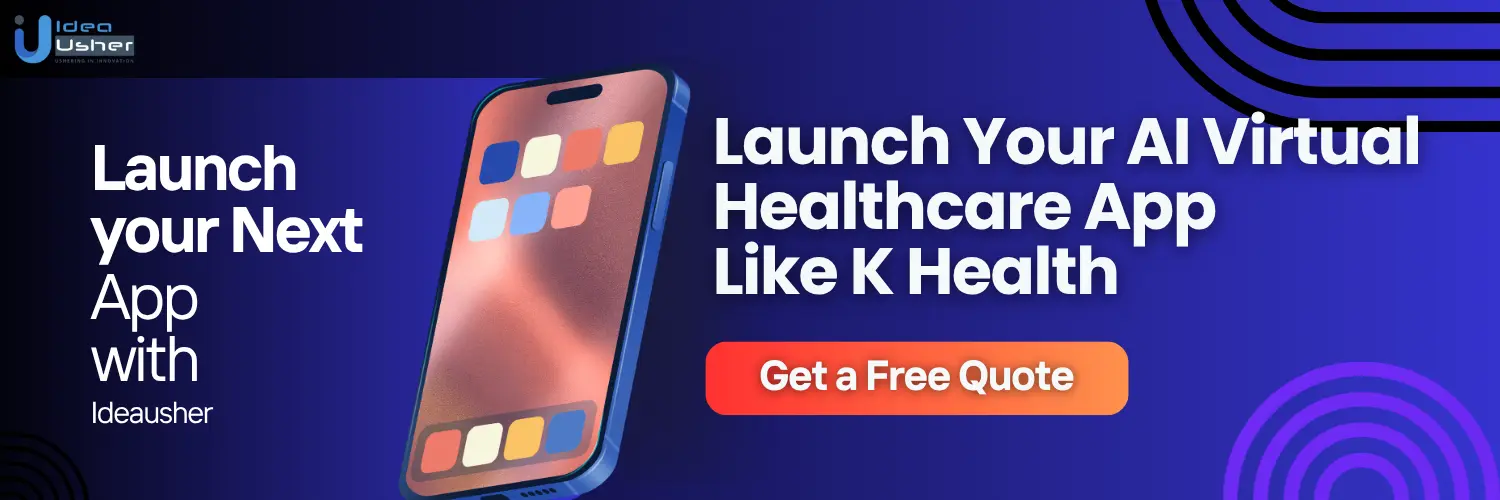
What is the K Health App?
The K Health app is an AI-powered telemedicine platform designed to provide affordable, accessible healthcare at any time. Offering 24/7 virtual consultations with licensed medical professionals, it’s especially beneficial for those without traditional insurance or those seeking more convenient healthcare solutions.
Key Features of the K Health App
AI-Powered Symptom Checker
One of the standout features of K Health is its AI-powered symptom checker. Users can input their symptoms into a chat interface, and the AI compares them against over 400 million anonymized medical records to provide insights into what similar patients were diagnosed with and how they were treated.
While the AI doesn’t give official diagnoses, it prepares users for a more informed consultation with a licensed provider.
24/7 Access to Medical Providers
K Health offers on-demand access to licensed, board-certified medical providers via text-based consultations, available around the clock. This eliminates the need for appointments and allows users to receive care for urgent medical needs at their convenience.
Comprehensive Range of Services
The app provides a wide scope of care, including:
- Urgent Care: For conditions like colds, flu, rashes, UTIs, and headaches.
- Primary Care: Management of chronic conditions such as diabetes, high blood pressure, high cholesterol, and acid reflux.
- Mental Health: Diagnosis and medication management for anxiety, depression, and more.
- Medical Weight Management: Includes prescriptions for GLP-1 medications like Wegovy® and Saxenda®, when clinically appropriate.
Prescriptions and Referrals
K Health allows providers to prescribe medications, manage prescriptions, and make referrals to specialists when necessary. It also ships generic medications directly to users, providing added convenience.
How Does the K Health App Work?
The K Health app offers a unique and efficient approach to healthcare, combining AI technology with licensed medical professionals for quick and convenient care. Here’s how the process unfolds step by step:

Step 1: The AI-Powered Symptom Checker
The journey begins with the app’s AI-powered symptom checker, a smart and conversational tool designed to gather initial information before users even speak with a doctor.
What Users Do: Users open the K Health app and describe their symptoms in plain, everyday language. For example, they might type something like, “I have a headache and a fever.”
What the AI Does
Instead of simply matching symptoms to generic medical resources, K Health’s AI goes a step further. Trained on millions of anonymized real-world patient records, it analyzes users’ age, gender, symptoms, and medical history.
The AI then compares users to similar individuals and offers data-driven insights, such as, “75% of women aged 30-45 with your symptoms were diagnosed with a sinus infection.“
The Outcome
At this stage, users get immediate, free educational information. The AI doesn’t provide a final diagnosis but empowers users with valuable context to understand the likelihood of certain conditions, making them feel more informed before deciding on the next step.
Step 2: The Seamless Transition to Care
After the symptom check, the app intelligently guides users to the next appropriate step based on their situation.
For Peace of Mind or Simple Issues
If the AI’s insights reassure users that no further care is needed, they can simply move on, knowing they’ve explored their options.
For Diagnosis and Treatment
If the issue seems more serious or users would prefer professional care, they can easily transition to a consultation with a licensed K Health medical provider. Here, the AI has already done much of the preliminary work, compiling a structured intake summary that’s ready for the provider’s review.
Step 3: The Human Touch
Once the AI has done the groundwork, it’s time for human expertise to take over.
The “AI Physician Mode”
When users start chatting with a licensed medical professional (such as a doctor, nurse practitioner, or physician assistant), the provider doesn’t start from scratch. Instead, they review the comprehensive summary prepared by the AI, which includes:
- A summary of the user’s symptoms.
- Relevant medical history (if provided).
- Suggested potential diagnoses based on the AI’s analysis.
- Any “red flags” or follow-up questions flagged by the AI.
The Interaction
The healthcare provider reviews the AI’s insights, asks any clarifying questions they need, and uses their clinical judgment to finalize a diagnosis. Thanks to the pre-existing data, this process is much faster than a typical doctor’s visit, allowing the provider to resolve the issue in just 5-7 minutes instead of the usual 15-20.
Step 4: Resolution and Treatment
The ultimate goal of any healthcare visit is to get users on the path to feeling better.
- Diagnosis & Prescriptions: If appropriate, the provider will deliver a diagnosis and, if necessary, prescribe medication that can be sent directly to the pharmacy.
- Lab Orders: If needed, the provider can also order lab tests, which users can complete at a local facility.
Care Plan & Follow-up
Users will receive a personalized care plan, including treatment instructions, home remedies, and any important signs to watch for. If follow-up care is necessary, the provider will guide users on the next steps.
Continuity of Care
For users enrolled in K Health’s partnerships with major health systems like Mayo Clinic or Cedars-Sinai, the entire interaction is documented in a shared medical record. This ensures seamless continuity between virtual and in-person care.
What is the Business Model of the K Health App?
K Health, a digital health company founded in 2016 and based in New York City, operates with a mission to provide affordable, accessible, and AI-driven healthcare. The company combines artificial intelligence with a massive database of medical data to deliver virtual primary care, symptom checking, and telemedicine consultations through its mobile app. Here’s an overview of K Health’s business model:
Subscription-Based Model
K Health’s primary revenue comes from subscriptions. Users pay a monthly or annual fee, which gives them access to unlimited doctor chats, personalized care, and ongoing monitoring. This recurring model forms the foundation of the business and ensures a consistent stream of income.
Pay-Per-Consultation
In addition to subscription plans, K Health offers a pay-per-consultation option. This allows users to pay for individual consultations without a subscription, making it a good choice for those who need occasional care or have specific, one-time health issues.
Healthcare Provider Partnership Fees
K Health collaborates with healthcare providers, earning referral fees when users are directed to seek further treatment. These partnerships drive revenue through patient referrals who need more extensive or in-person care.
In-App Purchases
The app also generates revenue through in-app purchases, such as mental health programs, dietary advice, and prescription refills. These offerings cater to users looking for more specialized services or guidance.
Affiliate Marketing
K Health earns additional revenue by engaging in affiliate marketing with pharmacies and laboratories. When users purchase prescriptions or lab tests through the app, K Health receives commissions, adding another revenue stream related to healthcare purchases.
Financial Performance & Growth
- Revenue: K Health’s estimated annual revenue is approximately $54.6 million, with projections for rapid growth (over 100% year-over-year growth).
- Funding: The company has raised $439 million over 13 funding rounds. The most recent funding round, a $50 million equity investment led by Claure Group, took place in mid-2024, bringing K Health’s valuation to nearly $900 million.
- User Base: K Health serves about 4 million users in the U.S., offering a cost-effective alternative to traditional healthcare, especially for those who are uninsured or underinsured.
- Growth Trajectory: The company continues to scale, supported by its innovative AI-driven healthcare model, partnerships with major health systems, and an expanding user base.
Investor Support
K Health has garnered strong investor backing from firms like Claure Group, Mangrove Capital, and Valor Equity. The significant funding rounds and increased valuation reflect investor confidence in K Health’s innovative approach to virtual healthcare.

AI Features to Make a Virtual Healthcare App Stand Out
To make a healthcare app like K Health truly stand out, adding AI for personalized, proactive care is key. It could help users predict health risks and manage medications better. This shift would turn the app into a trusted partner that supports users over time.
1. The Predictive Risk Stratification Engine
Instead of waiting for symptoms, this AI engine keeps an eye on your health data. It looks at things like your medical history, lifestyle, and wearables to spot risks for conditions like Type 2 diabetes or heart disease. This way, it can predict potential issues months or even years before they happen.
Why it stands out:
- Prevention Focus: Instead of merely reacting to health issues, this engine enables users to take early preventive measures, such as lifestyle coaching and dietary recommendations.
- Value to Health Systems: It aligns with the shift to “Value-Based Care” models, where focusing on prevention and keeping populations healthy is more cost-effective than treating illnesses once they manifest. This feature would make the platform highly attractive for B2B partnerships.
2. AI Medication Management & Optimization Module
Medication adherence is a major issue in healthcare. This AI module not only tracks refills but also checks for drug interactions and analyzes patient feedback. It can spot side effects or skipped doses and alert your provider so they can adjust your treatment as needed.
Why it stands out:
- Personalized Dosage Adjustment: The AI helps tailor medication dosages based on patient feedback, particularly in chronic conditions like hypertension or mental health issues.
- Continuous Monitoring: If the system detects missed doses or problematic side effects, it automatically prompts a follow-up with the provider, creating a continuous and supportive loop of care.
3. The Behavioral Health & Mental Wellness NLP Analyzer
Mental health can deeply impact physical health. This AI feature listens closely to your messages, analyzing tone and language to detect signs of anxiety or depression. It can help spot issues that might otherwise go unnoticed and prompt the right support.
Why it stands out:
- Proactive Mental Health Screening: The system can identify patients at risk of mental health issues and suggest screenings, even when the consultation is focused on physical symptoms like headaches or digestive problems.
- Holistic Care: Integrating mental health with primary care helps treat the whole person and provides a more comprehensive, supportive healthcare experience.
4. The Personalized Patient Education Generator
After a diagnosis, understanding complex medical terms can be tough. This AI feature creates a simple, personalized summary that breaks down the information based on your health literacy. It can even include videos or interactive content to make the treatment plan easier to follow.
Why it stands out:
- Enhanced Health Literacy: Clear and simple explanations help patients feel more confident in following their treatment plans, improving adherence and outcomes.
- Time-Saving for Providers: Automating patient education frees up clinicians to focus on more complex tasks while ensuring that every patient receives consistent, high-quality guidance.
5. The Chronic Care Digital Twin
A digital twin is a virtual model of your body that’s updated with data from wearables and medical records. It simulates how changes like a new diet or medication could affect your health. This lets doctors test treatments safely before trying them on you.
Why it stands out:
- Personalized Intervention Testing: The digital twin lets doctors simulate treatments or lifestyle changes for chronic conditions (e.g., diabetes or asthma) to predict their impact before trying them on the actual patient.
- Predictive Alerts: The digital twin can anticipate issues like a spike in blood pressure or an asthma attack, alerting both the patient and provider so they can take proactive steps to prevent complications.
How to Develop a Virtual Healthcare App Like K Health?
We have years of experience creating virtual healthcare solutions similar to K Health. Our team knows what works and how to make healthcare apps simple, secure, and effective. We focus on building tools that truly improve the experience for both patients and healthcare providers. Here’s how we approach the process step by step.

1. Define Care Model and AI
We begin by working with you to decide the type of care model for your app. Whether it’s primary care, urgent care, chronic conditions, or mental health, we ensure it aligns with your vision. Then, we choose the right AI capabilities to match. This could be a symptom checker, predictive analytics, or an AI tool that supports doctors in diagnoses.
2. Build Secure Data Pipeline
Security is a priority in healthcare. We build a secure data pipeline that collects, anonymizes, and normalizes patient data. Our team ensures that the app follows strict privacy laws like HIPAA and GDPR. This gives you peace of mind that sensitive data is protected at all times.
3. Develop AI Engine
Next, we develop the app’s AI engine. Our machine learning models help with diagnosis and triage by analyzing patient data. We also integrate Natural Language Processing so the AI understands user input better. The system adapts with features like “next best question” logic, ensuring a smooth user experience.
4. Design Physician Interface
We design the interface with healthcare professionals in mind. User-friendly dashboards display patient data, and AI recommendations are presented to support, not replace, the physician. This allows doctors to make informed decisions quickly without feeling overwhelmed by technology.
5. Integrate EMR and Telehealth
We make sure your app integrates with existing EMR systems and telehealth platforms. By using standard APIs like FHIR and HL7, we enable real-time synchronization of patient data. This helps ensure that healthcare providers have accurate and up-to-date information when making decisions.
6. Test, Validate, and Deploy
Before going live, we rigorously test and validate the app. We work with medical experts to ensure it functions correctly and reliably. After deployment, we implement a system for continuous monitoring, ensuring the app stays effective and up to date over time.
Revenue Potential of a Virtual Healthcare App like K Health
The virtual healthcare market has become essential in modern healthcare, offering significant opportunities for growth. Revenue from a virtual healthcare app depends on factors like the target market and service depth. While a basic telehealth app may face limitations, a comprehensive AI-driven platform like K Health could offer more sustainable and scalable revenue over time.
B2C Revenue Stream
The B2C revenue model is the simplest but also has limitations in scale and user value. Virtual healthcare apps, like K Health, can target consumers directly with a pay-per-visit or subscription model.
1. Pay-Per-Visit Model
Estimates: $49 – $99 per consultation.
Apps like Teladoc and Doctor on Demand operate on this model, particularly for non-insured users.
Revenue Calculation: The revenue potential can be calculated simply by multiplying the number of consultations by the average consultation fee. For example, 100,000 consultations annually at $49 per visit generate $4.9 million.
Drawback: While profitable in the short-term, this model lacks recurring revenue stability and is purely transactional.
2. Monthly Subscription Model
Estimates: $19 – $49 per month per user.
Platforms like Hims & Hers and Ro use subscriptions for ongoing healthcare services such as mental health, dermatology, and primary care. K Health charges around $29/month for its primary care subscription.
Revenue Calculation: This model provides a steady stream of recurring revenue, which is ideal for user retention and managing chronic conditions. With 10,000 subscribers at $29/month, the annual revenue would be $3.48 million.
However, a purely B2C model faces challenges, particularly the high cost of customer acquisition and the limited potential to tap into large enterprise-level contracts.
B2B Revenue Stream
While the B2C model offers a stable foundation, the true potential for revenue growth lies in the B2B model. This model targets large organizations, health systems, and payers, allowing for more scalable revenue.
1. Per Member Per Month Model
Estimates: $0.50 – $3.00 per member per month (PMPM).
Major players like Teladoc and Amwell use this model by contracting with insurance companies and large employers to provide virtual healthcare as a benefit.
Revenue Calculation: This model is particularly lucrative at scale. For instance, a contract with a health plan covering 1 million lives at a conservative rate of $1.50 PMPM generates:
- Monthly Revenue: 1,000,000 members x $1.50 = $1.5 million.
- Annual Revenue: $18 million from just one contract.
Scaling Potential: With multiple contracts, revenue quickly grows into the tens or even hundreds of millions of dollars.
2. SaaS Licensing Fees for Health Systems
Estimates: $250,000 – $2+ million per year, per health system.
K Health employs this strategy by licensing its AI-powered platform to major health systems such as Cedars-Sinai and Mayo Clinic, allowing these institutions to operate the platform as their own branded service.
Revenue Calculation: The SaaS model commands a high fee for providing integration and ongoing support. A contract with a mid-sized health system could range from $500,000 to $1 million annually, while larger health systems could pay tens of millions in multi-year deals.
Other Revenue Streams
Beyond the core service offerings, virtual healthcare platforms can boost their revenue through high-margin ancillary services.
1. Prescription Fulfillment & Pharmacy Services
Estimates: Margin on medication, typically 15-35%.
Similar to platforms like Hims & Hers, K Health can earn significant revenue by facilitating medication fulfillment through pharmacies.
Revenue Generation: For chronic conditions or high-demand medications (like weight loss treatments), the continuous nature of medication refills provides a reliable, high-value revenue stream.
2. Lab Test Ordering & Kickbacks
Estimates: A percentage of the lab fee or a fixed fee per order.
By partnering with national laboratories such as Quest Diagnostics or Labcorp, virtual healthcare platforms can receive referral fees or a revenue share whenever a patient orders lab tests through the platform.
Revenue Generation: This adds an additional revenue layer for virtual healthcare apps, especially when clinical pathways lead to frequent diagnostic tests.

Common Challenges of a Virtual Healthcare App
Building a virtual healthcare app isn’t just about a smooth interface or strong backend. You’ll need to address key clinical, technical, and human challenges that could make or break the platform. After working with many clients, we’ve learned how to tackle these issues and have developed strategies that can truly help you succeed.
1. Model Bias and Fairness
AI can become a liability if it’s not inclusive. Models trained on non-representative data may provide inaccurate diagnoses for underrepresented groups, risking clinical and legal consequences.
Our Solution
We ensure fairness by sourcing diverse training data from multiple demographics. This approach reflects real-world patient diversity. Additionally, we use automated bias audits and debiasing techniques like adversarial de-biasing to eliminate biases from the AI’s decision-making process.
The Result This approach leads to a clinically validated AI that can be trusted across all patient groups, mitigating regulatory risks and building trust.
2. Physician Adoption Resistance
Physicians are trained to trust their judgment, so introducing AI without context or transparency can lead to rejection. If clinicians don’t trust the AI, they won’t use it.
Our Solution
We design AI as a co-pilot, not a replacement. The AI offers transparency by showing how it arrived at its recommendations. By integrating AI into the clinician’s workflow and involving them in the development process, we build trust and acceptance.
The Result: Clinicians feel more comfortable using AI, reducing their cognitive load and improving patient care through collaboration.
3. Real-Time EMR Integration
Health data is scattered across various systems, making it difficult for providers to get a complete patient profile, which increases the risk of errors.
Our Solution
We use FHIR-based APIs to integrate data across systems, standardizing patient information. We also apply Natural Language Processing (NLP) to extract and structure unstructured data from physician notes, ensuring a complete patient view.
The Result: This approach creates a unified, 360-degree view of the patient, ensuring better diagnostic accuracy and continuity of care.
Top Tools for Virtual Healthcare App Development
Launching a virtual healthcare app like K Health isn’t just about having a solid idea. You need a well-thought-out tech stack that combines clinical intelligence, security, and smooth integration. From choosing the right AI tools to ensuring data protection, every component must work together to provide a seamless and reliable experience.

1. AI & NLP Frameworks
These are the go-to open-source libraries for building and training machine learning models. TensorFlow excels in robust deployment, while PyTorch is favored for research and rapid prototyping. They help develop core diagnostic algorithms, predictive risk engines, and chronic care management models.
Hugging Face Transformers
This library is ideal for Natural Language Processing (NLP). It offers pre-trained models that can be fine-tuned for clinical tasks like:
- Automated charting (extracting symptoms from patient descriptions)
- Clinical note analysis (parsing unstructured EMR data)
- Sentiment analysis (detecting signs of anxiety or depression in patient messages)
2. EHR Integration
HL7 & FHIR APIs
FHIR (Fast Healthcare Interoperability Resources) is the modern standard for healthcare data exchange. It allows you to securely pull and push patient data to and from major EMRs like Epic and Cerner.
Redox
Redox acts as a universal translator for healthcare data, providing a platform to integrate with over 50 different health systems. It simplifies the complex task of data integration, enabling you to connect once and access multiple systems.
For startups, Redox is a game-changer. For larger enterprises, building a dedicated FHIR-based integration layer may be a more strategic long-term investment.
3. Data Security & Compliance
AWS HealthLake, Azure Health Data Services, and Google Cloud Healthcare API are designed specifically for healthcare and are fully HIPAA-compliant. These services provide secure data storage and make it easier to manage medical records with FHIR-native databases. They also offer powerful analytics tools to help analyze data securely and efficiently.
4. Video & Communication APIs
| API Provider | Features | Best For |
| Twilio (Video & Programmable SMS) | Scalable video APIs and secure messaging | Virtual visits and patient-provider communication |
| Agora | Low-latency, high-quality video and voice, works well on weak networks | Smooth real-time consultations |
| Vonage (formerly TokBox) | Customizable video communication with features like screen sharing for patient education | Custom video experiences and patient education |
5. MLOps & Validation
- MLflow & Kubeflow: MLflow and Kubeflow are platforms for managing the machine learning lifecycle. MLflow is easier to adopt, while Kubeflow is more Kubernetes-native and complex. Both help with tracking experiments, managing models, and deploying them to production.
- Neptune.ai: Neptune.ai is a tool for experiment tracking and model registry, helping you ensure that only clinically validated models make it to production.
6. UI/UX Frameworks
React Native & Flutter
These are the leading cross-platform frameworks for building apps that work seamlessly on both iOS and Android.
- React Native: Based on JavaScript, it’s popular for web developers transitioning to mobile and has a large library ecosystem.
- Flutter: Uses Dart and provides superior UI consistency and performance across platforms due to its own rendering engine.
Both frameworks are excellent. If UI consistency and performance are critical, Flutter has the edge. However, React Native offers a larger community and ecosystem, making it a good choice for rapid development.
Conclusion
AI-powered healthcare platforms like K Health are shaping the future of care by making it more personalized and accessible. By integrating clinical AI with EHR systems and continuous learning, these platforms offer scalable and affordable solutions. With Idea Usher’s expertise in AI, compliance, and system integration, businesses can confidently create their own platforms. These solutions can drive sustainable revenue and truly improve patient care. This will help transform the way healthcare is delivered in the digital age.
Looking to Develop a AI-Powered Virtual Healthcare App?
At Idea Usher, we specialize in building AI-powered virtual healthcare apps that go beyond just technology. With over 500,000 hours of coding experience, our team of ex-MAANG/FAANG developers has the expertise to transform your vision into a secure, scalable, and clinically reliable healthcare solution, tailored to meet the unique needs of both patients and providers.
- From AI Triage to Chronic Care: We specialize in AI-driven triage and chronic care management, building diagnostic engines and seamless EMR integrations to enhance patient care.
- Built for Trust and Compliance: Your platform is designed with data security and HIPAA compliance at its foundation, ensuring privacy and protection at every step.
- Designed for Adoption: We create intuitive experiences for patients and time-saving tools for providers, ensuring both ease of use and meaningful impact.
Let’s Build the Future of Healthcare Together
Check out our latest projects to see how we turn healthcare innovation into reality. Let us help bring your vision to life.
Work with Ex-MAANG developers to build next-gen apps schedule your consultation now
FAQs
A1: The cost to develop an AI healthcare app like K Health can vary widely, typically ranging from a moderate to a significant investment depending on the complexity of the AI models, integrations, and features. The more advanced the AI, and the greater the number of systems to integrate with, the higher the cost.
A2: AI in healthcare is safe when it follows strict guidelines such as HIPAA, GDPR, and FDA standards. With the right encryption protocols and proper validation, AI solutions can be both secure and fully compliant with the necessary regulations to protect patient data.
A3: Yes, AI healthcare apps can easily integrate with existing hospital systems using widely accepted standards like FHIR or HL7 APIs. This makes it possible for the app to work seamlessly with major EHR systems like Epic and Cerner, ensuring smooth data exchange and continuity of care.
A4: AI reduces physician workload by automating repetitive tasks such as symptom collection, note-taking, and triage. This allows doctors to dedicate more time to providing personalized care, while the AI takes care of routine processes, improving overall efficiency.
